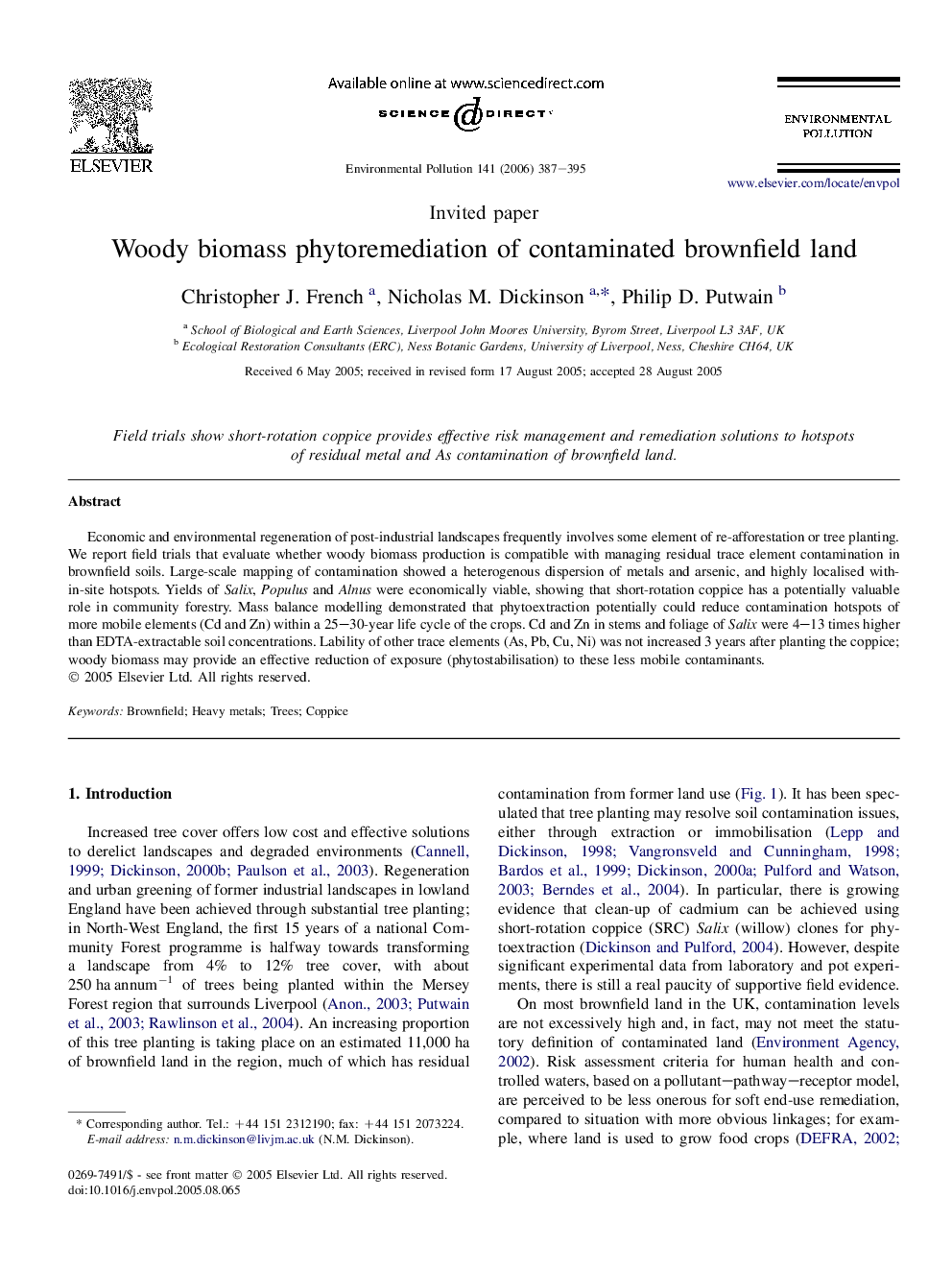| Article ID | Journal | Published Year | Pages | File Type |
|---|---|---|---|---|
| 4428047 | Environmental Pollution | 2006 | 9 Pages |
Economic and environmental regeneration of post-industrial landscapes frequently involves some element of re-afforestation or tree planting. We report field trials that evaluate whether woody biomass production is compatible with managing residual trace element contamination in brownfield soils. Large-scale mapping of contamination showed a heterogenous dispersion of metals and arsenic, and highly localised within-site hotspots. Yields of Salix, Populus and Alnus were economically viable, showing that short-rotation coppice has a potentially valuable role in community forestry. Mass balance modelling demonstrated that phytoextraction potentially could reduce contamination hotspots of more mobile elements (Cd and Zn) within a 25–30-year life cycle of the crops. Cd and Zn in stems and foliage of Salix were 4–13 times higher than EDTA-extractable soil concentrations. Lability of other trace elements (As, Pb, Cu, Ni) was not increased 3 years after planting the coppice; woody biomass may provide an effective reduction of exposure (phytostabilisation) to these less mobile contaminants.
